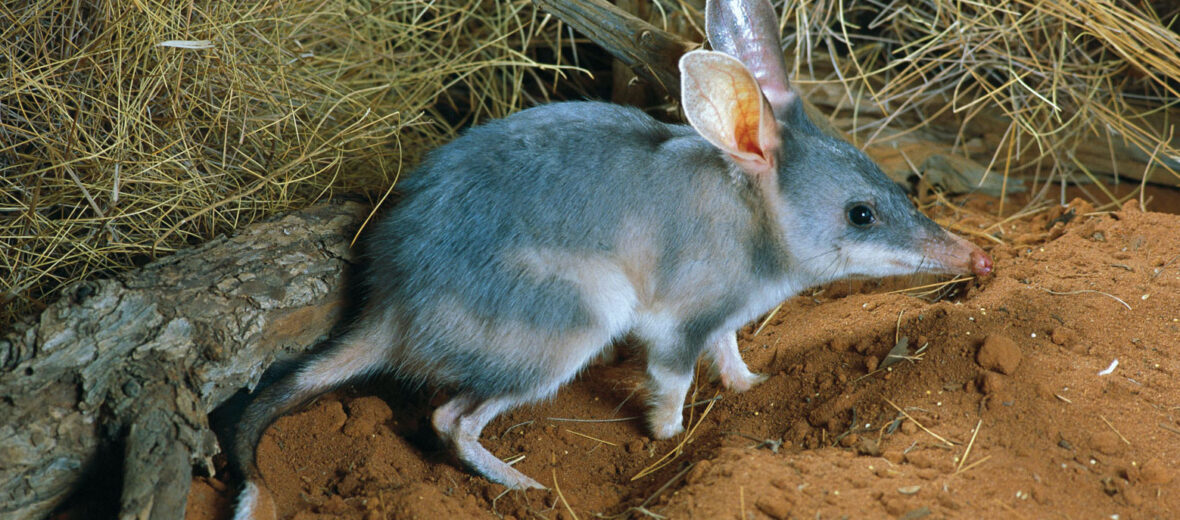
The bilby is small marsupial that belongs to the bandicoot family. There used to be 2 species: the greater and the lesser bilby. They were, at one time, widespread across Australia. Today, only the greater bilby exists and it’s endangered due to habitat loss. These critters can be found in South-western Queensland, parts of Western Australia, and the Northern territories. They inhabit deserts, grasslands, and shrublands.
First the Stats…
Scientific name: Macrotis
Weight: Up to 5.5 lbs.
Length: Up to 21 inches, including their tail
Lifespan: Up to 11 years
Now on to the Facts!
1.) Bilbies are sexually dimorphic (males and females look different) in that males are 2 times larger than females.
2.) They have strong front legs with sharp claws, used for digging for food and self defense.
3.) Because of their large ears they are frequently called the rabbit-eared bandicoot.
4.) The bilby is nocturnal (active at night).
5.) These critters use their large ears to vent heat, which helps regulate body temperature.
But wait, there’s more on the bilby!
6.) Their ears are soft and malleable. They can be positioned close to the body and even be folded in half!
7.) They have a strong sense of smell and keen hearing, which makes up for their poor eyesight.
Did you know…?
The bilby doesn’t drink water. They get all the moisture they need from the foods they eat.
8.) In a typical evening they will eat insects, lizards, fungi, seeds, bulbs, and fruit. They are therefore omnivores (eat plant and animal matter).
9.) Foxes and cats are the primary predators of bilbies.
10.) The bilby is a solitary and territorial creature. They build several burrows in the ground where they will hide during the day to escape predation and the heat. Burrows are steep and can be more than 6 feet deep!
But wait, there’s still more on the bilby!
11.) Pregnancy lasts only 12 days! Newly developed babies crawl into their mother’s pouch to continue growing.
12.) The pouch is backward-facing to prevent dirt from entering it, while digging burrows.
Now a Short Bilby Video!
Also, check out the Critter Science YouTube channel. Videos added frequently!
Want to suggest a critter for me to write about? Let me know here.



